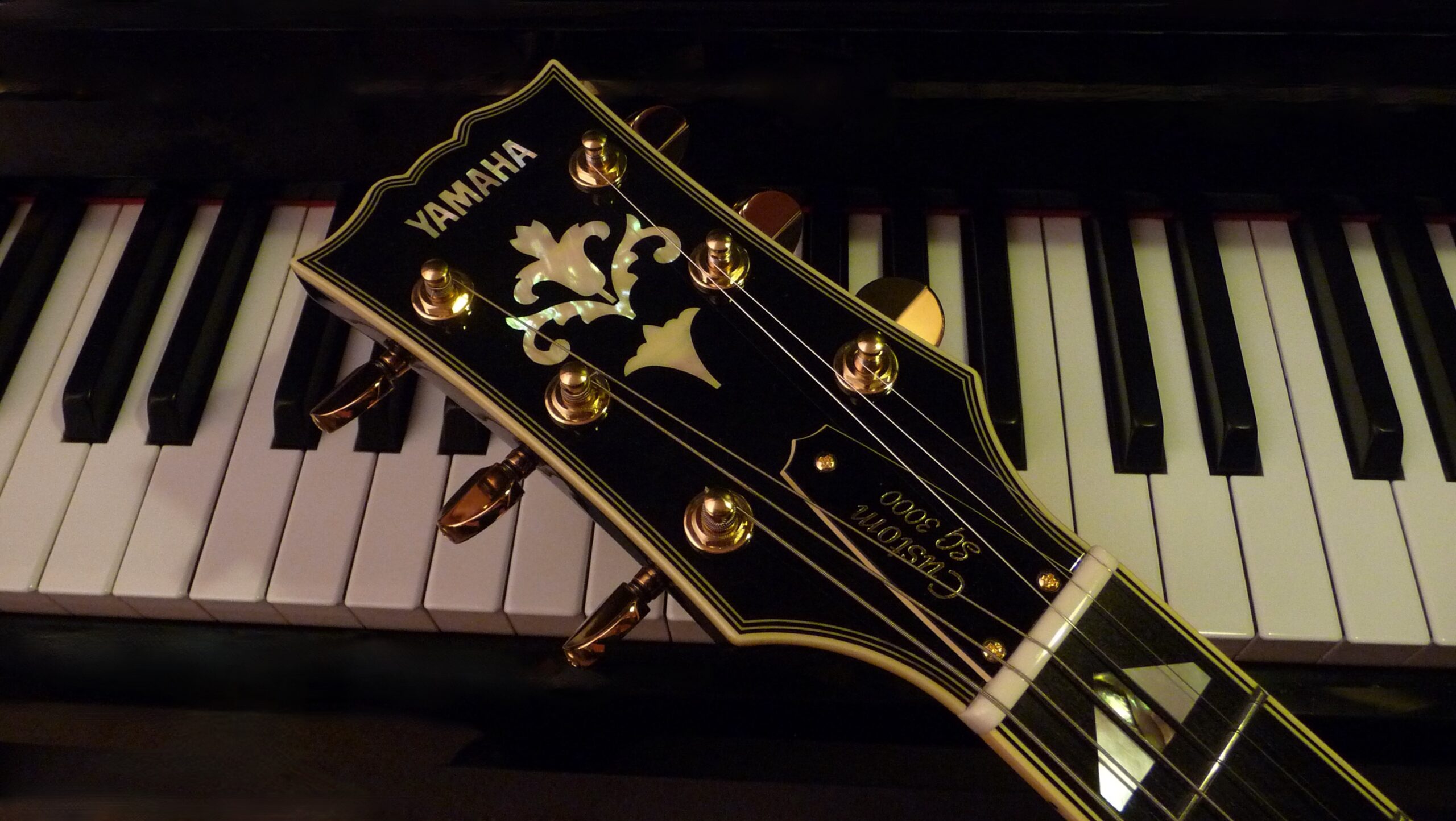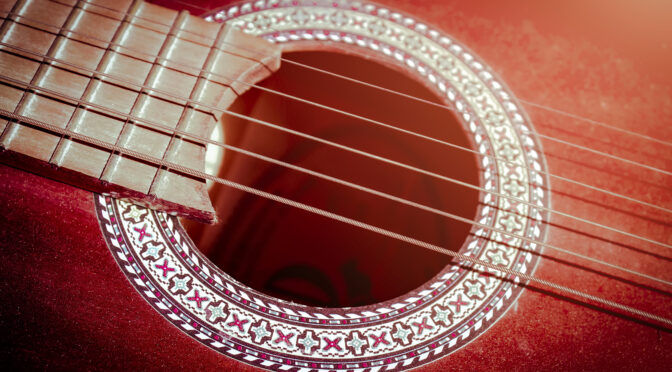Guitars have long captured the hearts and souls of musicians and enthusiasts worldwide. The old, rich and varied history of guitar learning and teaching is a fascinating journey that stretches back centuries, encompassing the evolution of musical instruments and the development of innovative teaching methods. From the ancient stringed instruments to modern-day online tutorials, this article explores the rich tapestry of guitar education and its transformative impact on musicians across the ages.
The Origins of the Guitar
Early Stringed Instruments: The origins or roots of the guitar in its earlier forms can be traced back to ancient civilizations such as Mesopotamia, Egypt, and Greece, where early stringed instruments laid the foundation for its evolution. Of course these early stringed instruments bore little resemblance to the modern guitar, but they were precursors non-the-less.
During the Renaissance period the lute was the dominant instrument throughout Europe. This instrument had been introduced to Europe much earlier by the Moors when they conquered Spain and southern Italy. The lute was completely different to the guitar in shape and also in the number of strings. In Spain however, the vihuela which was shaped more like the modern guitar we know today was the most popular instrument. Vihuelas differed from the modern guitars however, in that they were double stringed instruments and they had a curved back, rather than a flat back like the later guitars.
The earliest guitars as we know them today originated in Spain. Originally they were four-stringed instruments, which quickly went to five strings and finally to six strings. One of the earliest guitarists was Gaspar Sanz who used a five-string guitar.
Throughout the Baroque period, guitars, lutes and vihuelas co-existed, but gradually the popularity of lutes and vihuelas waned as the popularity of guitars rose. By the mid to late eighteenth century, lutes and vihuelas had virtually disappeared.
The Electric Guitar
Without doubt the emergence of the electric guitar in the twentieth century has had the greatest impact, not only on the development of guitar technique, but also on its popularity. The earliest pickups were developed in the 1930s with the solid body electric guitar being developed by Gibson and Fender in the 1940s. Without the electric guitar, we would not have had Gary Moore who is, without doubt, the greatest guitarist in the modern period……. and the guitar world would have been so much the poorer!
Learning in Ancient Times
Historical References to Guitar-Like Instruments can be seen in many cultures. Ancient texts and artifacts provide glimpses of instruments resembling guitars in various cultures. These instruments were often used for entertainment, storytelling, and religious ceremonies.
Learning to play in Ancient Cultures: In ancient civilizations we believe that the art of playing guitar-like instruments was passed down through oral traditions and apprenticeships. Skilled musicians would impart their knowledge to the next generation, ensuring the survival of guitar-like playing techniques.
Guitar Teaching Through the Centuries
The Emergence of Formal Guitar Instruction: During the Classical era, the popularity of the guitar soared, leading to the establishment of formal guitar schools and the publication of instructional books.
Guitar Teaching Methods and Techniques: Guitar pedagogy evolved as influential figures developed systematic teaching methods. Notable examples include Matteo Carcassi, Ferdinando Carulli, Dionisio Aguado and Mauro Giuliani who focused on developing proper guitar technique.
Influential Figures in Guitar Education
Classical Guitar Virtuosos: Early Classical Guitar virtuosos like Mauro Giuliani and Fernando Sor took guitar playing to new heights. In the Romantic period Francisco Tárrega continued the tradition. In the twentieth century, the classical guitar repertoire was expanded with the contributions of many great composer/players, including Augustin Barrios, Hector Villa Lobos, Joaquin Rodrigo, Leo Brouwer and William Walton, to name just a few. Their contributions set the standards for technique and repertoire, shaping generations of guitarists.
Modern Innovators: In the contemporary era there are many great technical virtuosos. Innovative guitar players and teachers like Eddy Van Halen, Rusty Cooley, Guthrie Govan, Paul Gilbert, Steve Vai and Tommy Emmanuel have embraced unconventional playing techniques and subsequently influenced teaching approaches. They encourage creativity, improvisation, and personal expression, pushing the boundaries of traditional guitar education.
The Evolution of Guitar Education
Traditional Methods vs. Online Learning: In recent years, the landscape of guitar education has undergone a significant shift. While traditional methods of in-person lessons and music schools continue to thrive, online guitar learning has become a convenient and accessible way to learn the guitar.
The Impact of Technology on Guitar Teaching: Technology has transformed the way we approach guitar education. With the rise of online tutorials, video lessons, and interactive learning apps, aspiring guitarists can now access a vast array of resources at their fingertips. This digital revolution has democratized guitar learning, breaking down barriers of distance and cost.
Guitar education has become a symphony of diverse styles and approaches, allowing students to explore various genres, techniques, and playing styles. From classical to rock, blues to flamenco, the guitar has been there and given its voice to human feeling. It has embraced and encompassed an expansive range of musical expressions. This versatility has opened up a world of possibilities for aspiring musicians, enabling them to find their unique voice within the strings of the instrument.
Guitar Lessons, a Journey of Self Discovery
In the modern era, it is essential to acknowledge the profound impact that guitar learning and playing has had on countless lives. Beyond the technicalities and theoretical knowledge, learning the guitar is a journey of self-discovery, a melodic expression of the soul. It is a vessel through which emotions flow, conveying joy, sorrow, love, and longing. The guitar becomes an extension of the player, resonating with the deepest recesses of their being.
In conclusion, the history of guitar learning and teaching is a testament to the timeless allure of this enchanting instrument. From its unassuming humble origins to the digital age, the guitar has played a major part in human culture. It captivated hearts and minds, transcending boundaries and cultures. It has become a symbol of passion, creativity, and personal growth.
In the depths of your soul, let the strings of the guitar whisper secrets of melodies untold. Embrace the enchanting journey of guitar learning and teaching, where passion intertwines with skill, and the language of music transcends all boundaries. Discover the history, embrace the techniques, and unlock the door to your musical dreams. Let the guitar be your faithful companion on this harmonious path of self-expression and artistic discovery.



